PLTW Biomed Final Exam
1/99
There's no tags or description
Looks like no tags are added yet.
Name | Mastery | Learn | Test | Matching | Spaced |
|---|
No study sessions yet.
100 Terms
gross exam
a microscopic examination of the tissues that make up the brain. Can see with your eyes and can be handled by hand.
medical examiners
what professional would perform a gross exam of organs?
histological exam
studies microscopic anatomy of tissues. needs to use a microscope to see individual cells.
forensic histologist, histologist
what professional would perform a histological exam of tissues?
nervous system
contains the brain, brain stem, spinal cord, and nerves. it is responsible for receiving, interpreting, and reacting to signals from inside and outside the body. uses chemical and electrical signals that transmit through the body, and responds to changes that it detects. nerve signals control most bodily functions, including sensation, movement, and digestive processes.
PNS
all the nerves in the body are part of the peripheral nervous system. the PNS brings information from the outside world and from within the body to the CNS.
CNS
the brain and spinal cord are part of the central nervous system. the CNS receives data from the PNS (outside world). the brain processes the information, makes decisions about what to do, and sends signals back via the peripheral nervous system to bring about a specific change.
frontal lobe
responsible for planning and organizing incoming information. also controls behavior and emotion.
parietal lobe
crucial in integrating sensory and visual information.
temporal lobe
used for processing language and storing information in the long-term memory.
occipital lobe
receives and processes sensory nerve impulses from the eyes.
1)MRI(Magnetic Resonance Imaging)
2)Slices, Cross sections
2 methods used in performing a gross exam of a brain during an autopsy
TBI(Traumatic Brain Injury)
a brain dysfunction caused by an outside force to the head
CTE
a progressive degeneration, and/or death, of nerve cells caused by repeated head injuries, such as repeated concussions
cells
basic unit for any organism such as a neuron that transmits information to other cells
tissues
composed of cells, and if relating this to nervous tissue it has both neurons and cells, which senses stimuli and transmits signals
organs
composed of tissue, for example, the brain is composed of nervous tissue, which allows the brain to interpret stimuli
organ system
composed of multiple organs, for example, the nervous system is composed of all the organs in the nervous system, which is responsible for all activities in the nervous system
epithelial tissue
composed of epithelial cells aligned in sheets and connected to one another. this tissue can be found lining the outer surfaces of all organs and blood vessels, in the mouth, and on the surfaces of humans. this tissue works to absorb, secrete, protect, and sense for us.
connective tissue
supports and connects other tissue types in the body. different types of connective tissue work to hold organs in place, attach muscle to bones, link bones with joints, or enable other tissues (like lungs) to stretch. it is found attached to and in between other tissues types in the body.
nervous tissue
nerves, the spinal cord, and the brain are composed of nervous tissues. this tissue, made up of specialized cells called neurons, works to receive, interpret, and respond to signals.
muscle tissue
makes up the muscles found in the body. can be striated, smooth, or cardiac
striated muscle
also known as skeletal muscle tissue, is attached to bones; voluntary
smooth muscle
found in the walls of internal organs; involuntary
cardiac muscle
found in the walls of the heart. this tissue provides the ability to contract; involuntary
genome
complete sets of genes within an organism, and genes are made up of blood
blood is made up of 4 different bases which can create a variety. since genomes are genes, genes are responsible for determining the cell structure and function by directing synthesis of proteins and coding RNA molecules.
how does a single genome code for so many types of tissues?
concussion
an injury to the head that causes the brain to quickly move back and forth, hitting the inside of the skull.
they are stretched, sheared, or transected (cut into pieces). when an individual has multiple severe concussions over their lifetime, a protein called tau forms clumps in the brain. these proteins slowly spread throughout the brain and kill brain cells.
what happens to the neurons during a concussion?
vacant stares, disorientation, inability to focus, memory impairment, slurred speech, and stumbling. may or may not involve a lot of consciousness. can heal within a few months.
what are the short term effects/symptoms of concussion?
multiple concussion which lead to tau protein formation can cause more severe symptoms including paranoia, mood and behavior changes, aggression and depression. if it is a sports player, a doctor may require the athlete to stop their sport to prevent permanent brain damage. may or may not involve a lot of consciousness. can heal within a few months.
what are the potential long-term effects of repeat concussions?
histologist
studies microscopic anatomy of tissues. they view tissue types under microscopes to study. trained to spot these variations in tissues that provide clues as to what happened to an individual prior to their death. they prepare tissue samples for pathologists. They are trained to cut samples from organs or other pieces of tissue and stain them with materials such as dyes, which can aid in microscopic tissue analysis. they do this around the same time a gross examination is being performed. they usually start their job as soon as possible to get results, but also avoid any decay. their job is important because they help medical examiners determine the cause of death. their work is incredibly important as tissues react in very specific ways to external influences. also examine tissues from living individuals who may have a tissue-related disease.
systemic pump
left side of the heart; pumps blood to the body to drop off oxygen.
pulmonary pump
right side of the heart; pumps blood to lungs to get oxygen
atria
receive blood as it enters the heart
"receiving halls"
right atrium (RA)
receives deoxygenated blood coming back from the body
left atrium (LA)
receives oxygenated blood coming back from the lungs
right ventricle (RV)
pushes deoxygenated blood to the lungs to get oxygen
left ventricle (LV)
pushes oxygenated blood to the body
veins
carry blood back to the heart
arteries
carry blood away from the heart
vena cavas
the largest vein in the human body, the inferior vena cava returns deoxygenated blood to the right atrium of the heart from body parts below the diaphragm.
pulmonary veins
bring blood w/ oxygen back from lungs
pulmonary arteries
carries deoxygenated blood to each corresponding lung.
aorta
the largest artery in the human body. carries blood with oxygen to whole body.
atrioventricular valves
separates the atriums and ventricles
semilunar valves
separate each ventricle from artery leading out
biscupid (mitral) valve
between LA and LV
tricuspid valve
between RA and RV
aortic valve
between LV and aorta
pulmonary valve
between RV & pulmonary artery
angina
- chest pain or discomfort due to reduced blood flow to the heart
- primary symptom of coronary artery disease.
-coronary artery disease is a cardiovascular condition in which atherosclerosis (the buildup of plaque in artery walls) occurs in the arteries that supply the heart (coronary arteries)
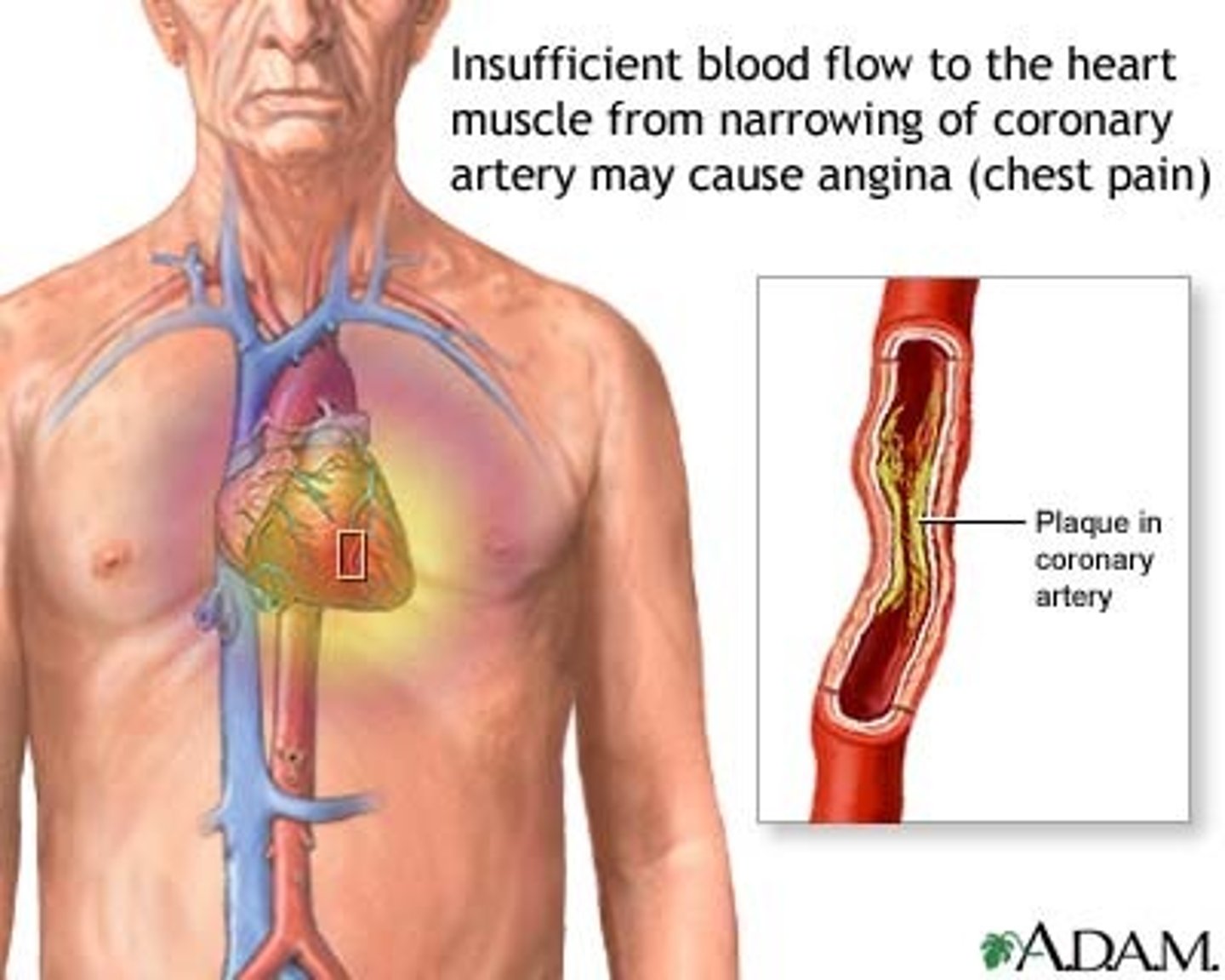
atherosclerosis
- a cardiovascular disease characterized by the gradual buildup of plaque in artery walls
- results from damage to the inner artery wall. This damage causes artery stiffness and the development of fatty deposits (plaque)
- plaque may grow in size until it completely blocks an artery, which is called total occlusion. when total occlusion occurs in vessels that supply the heart or brain, a heart attack or stroke may occur
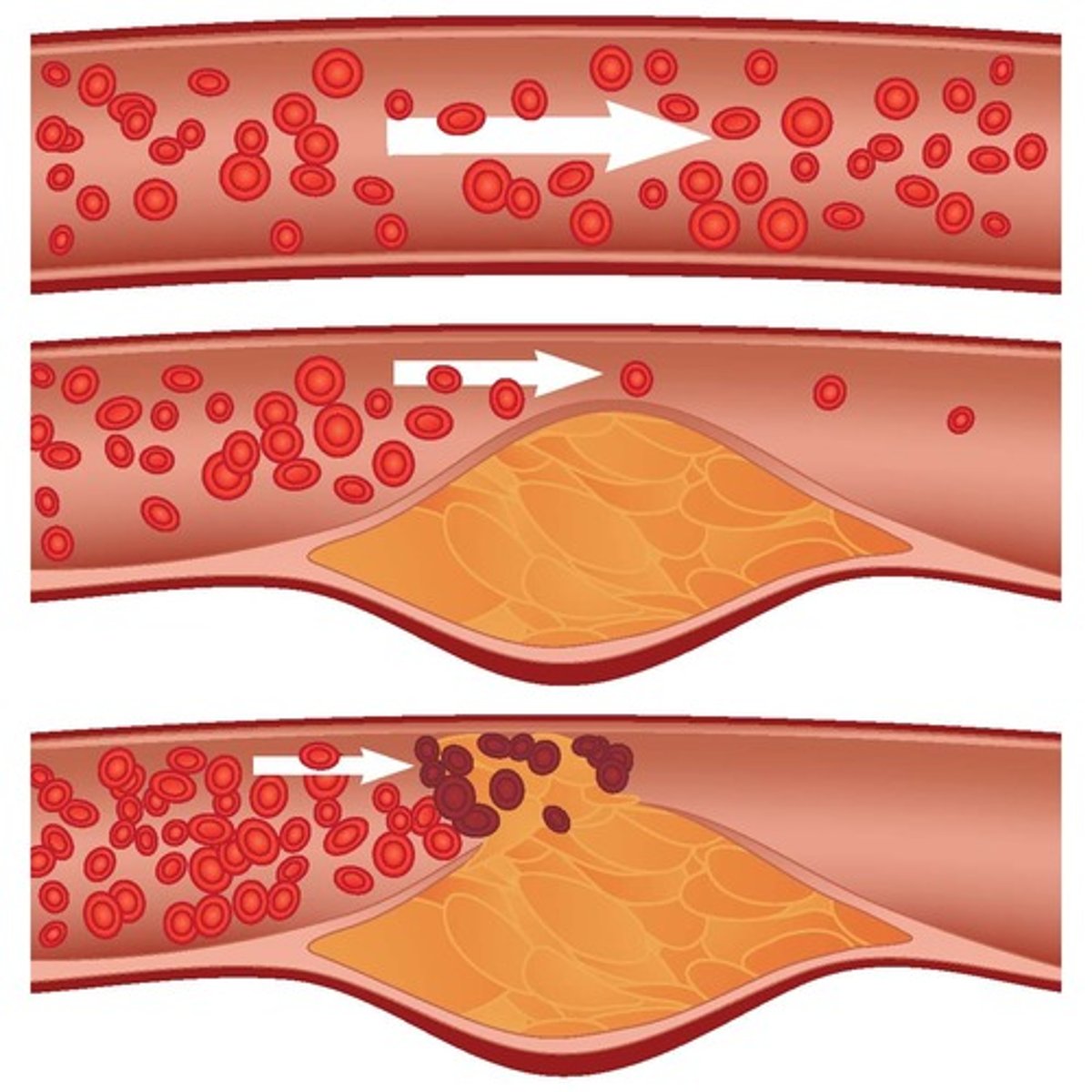
myocardial infarction
- a serious condition that occurs when blood and oxygen supply to the heart is reduced, causing part of the heart muscle to suddenly die
- results from plaque blockage (atherosclerosis) in the coronary arteries.
- blood supply to the heart may also become blocked when plaque from elsewhere in the body ruptures and forms a blood clot
- the blood clot can break off, travel to the heart, and get lodged in the smaller coronary arteries
- may experience immediate chest or arm pain, increased heart rate, sweating, fatigue, and nausea

aortic valve stenosis
- heart condition that occurs when the aortic valve narrows, partially obstructing blood flow across the valve
- AS is often caused by calcification of the aortic valve as one ages, which stiffens the valve and narrows the valve opening
- AS may not experience any symptoms, as AS typically develops over many years. However, in patients with advanced AS, chest pain, dizziness and fainting during exercise, and congestive heart failure are common symptoms
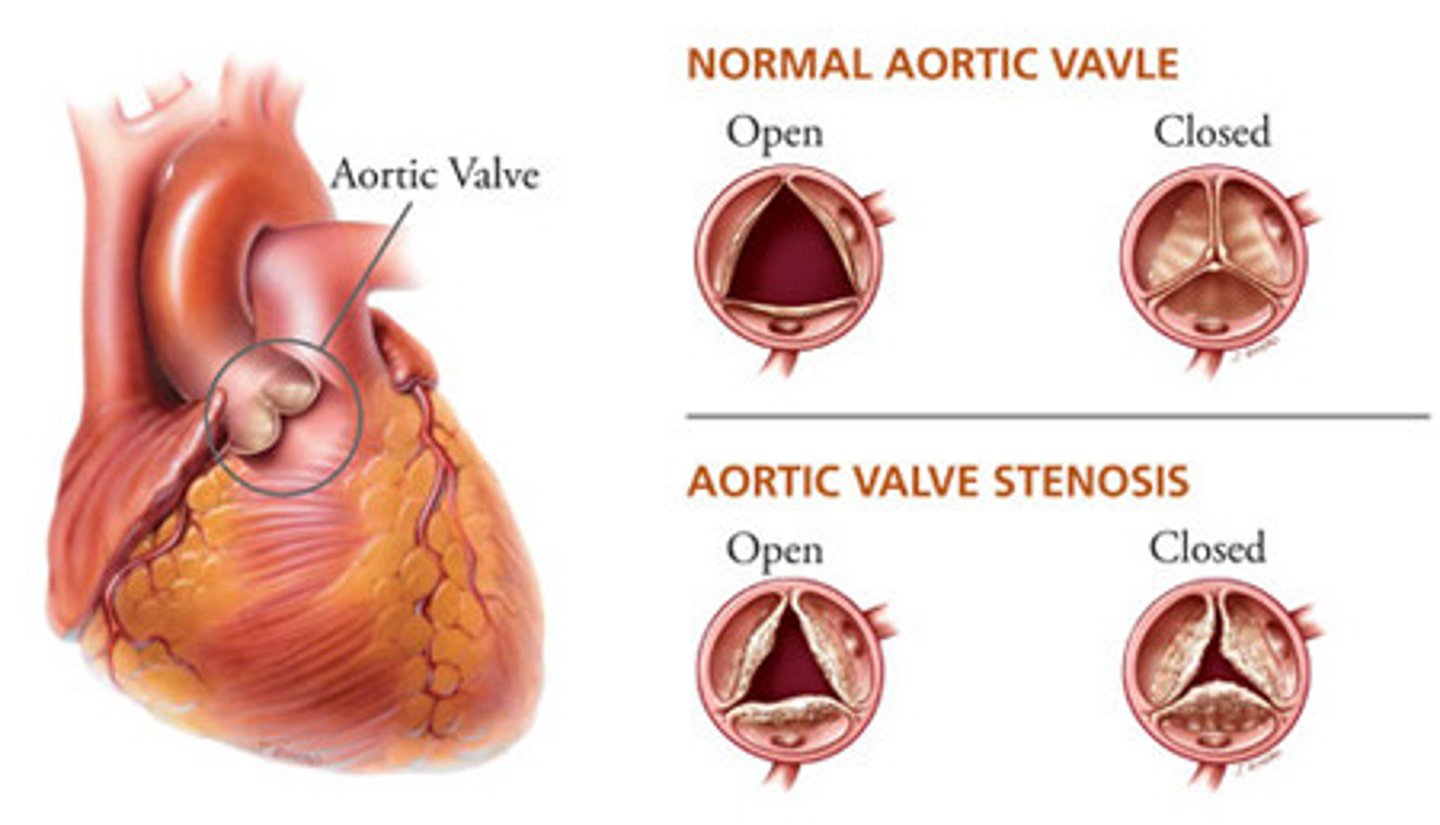
patent foramen ovale
- an abnormal hole present in the wall between the two upper chambers of the heart, or atria.
- PFO is a congenital condition, meaning it is present at birth
- the exact cause of PFO is not well understood, but genetics most likely play a role. after a baby is born, the pressure of blood pumping through the heart usually causes the foramen ovale opening to close, but in some cases it does not. most PFO defects are between 3 and 6 mm in diameter
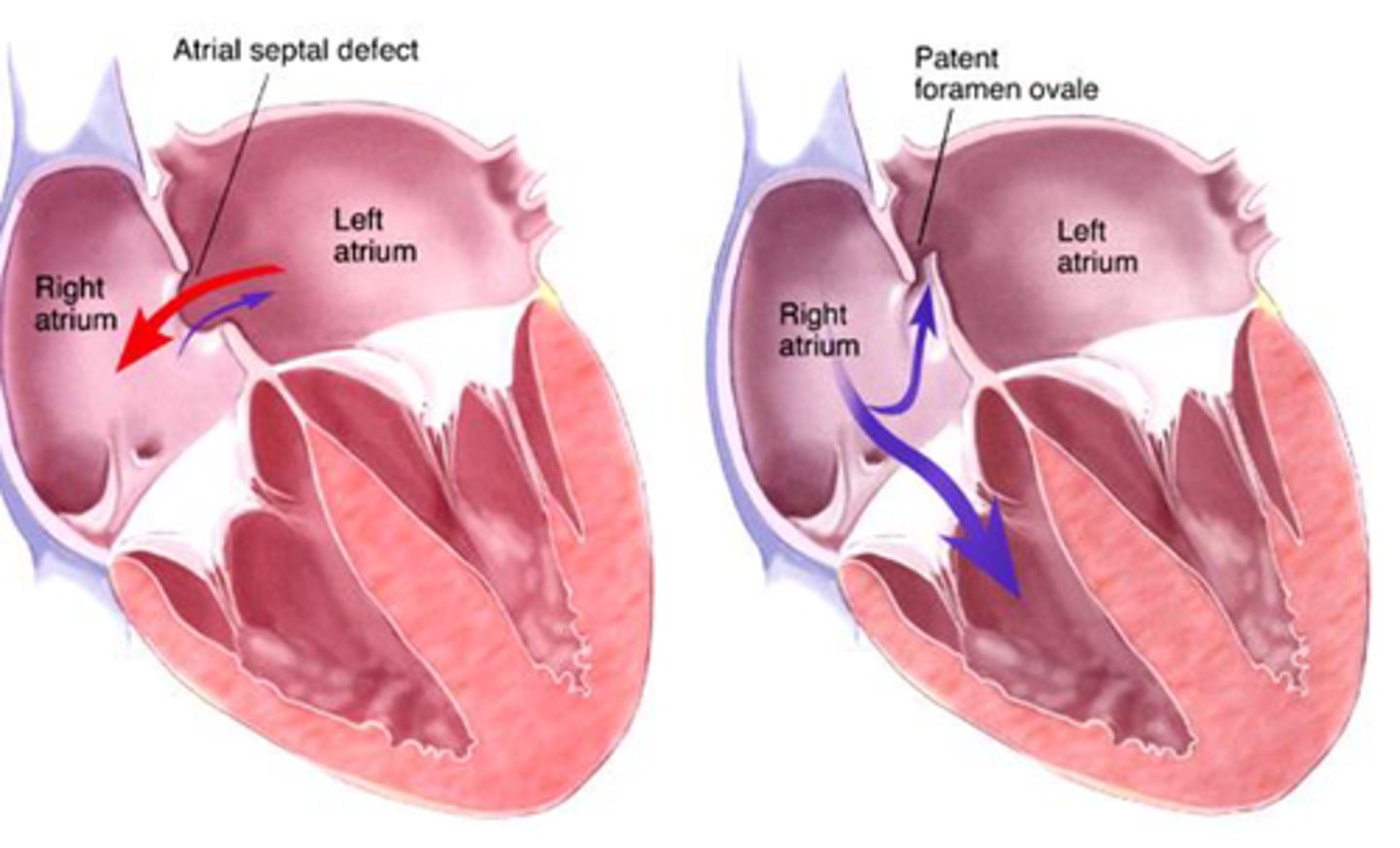
congestive heart failure
- a cardiovascular disorder that occurs when your heart cannot pump enough blood to supply the body.
- CHF can be caused by a variety of disorders, including structural defects with heart valves, disease of the heart muscle (cardiomyopathy), abnormal heart rhythms (arrhythmias), and heart attack
- the walls of the ventricles are thin and weak. they are unable to adequately pump blood out of the ventricles. Instead, blood remains in the ventricles and reduces the amount of blood that reaches the rest of the body and lungs during each heartbeat
- commonly experience symptoms such as fatigue and weakness, shortness of breath, swelling of the lower limbs, decreased alertness, and a reduced ability to exercise

hypertrophic cardiomyopathy
- a condition in the heart when the walls become abnormally thick
- this makes it hard for the heart to pump blood
- often goes undiagnosed for lack of symptoms
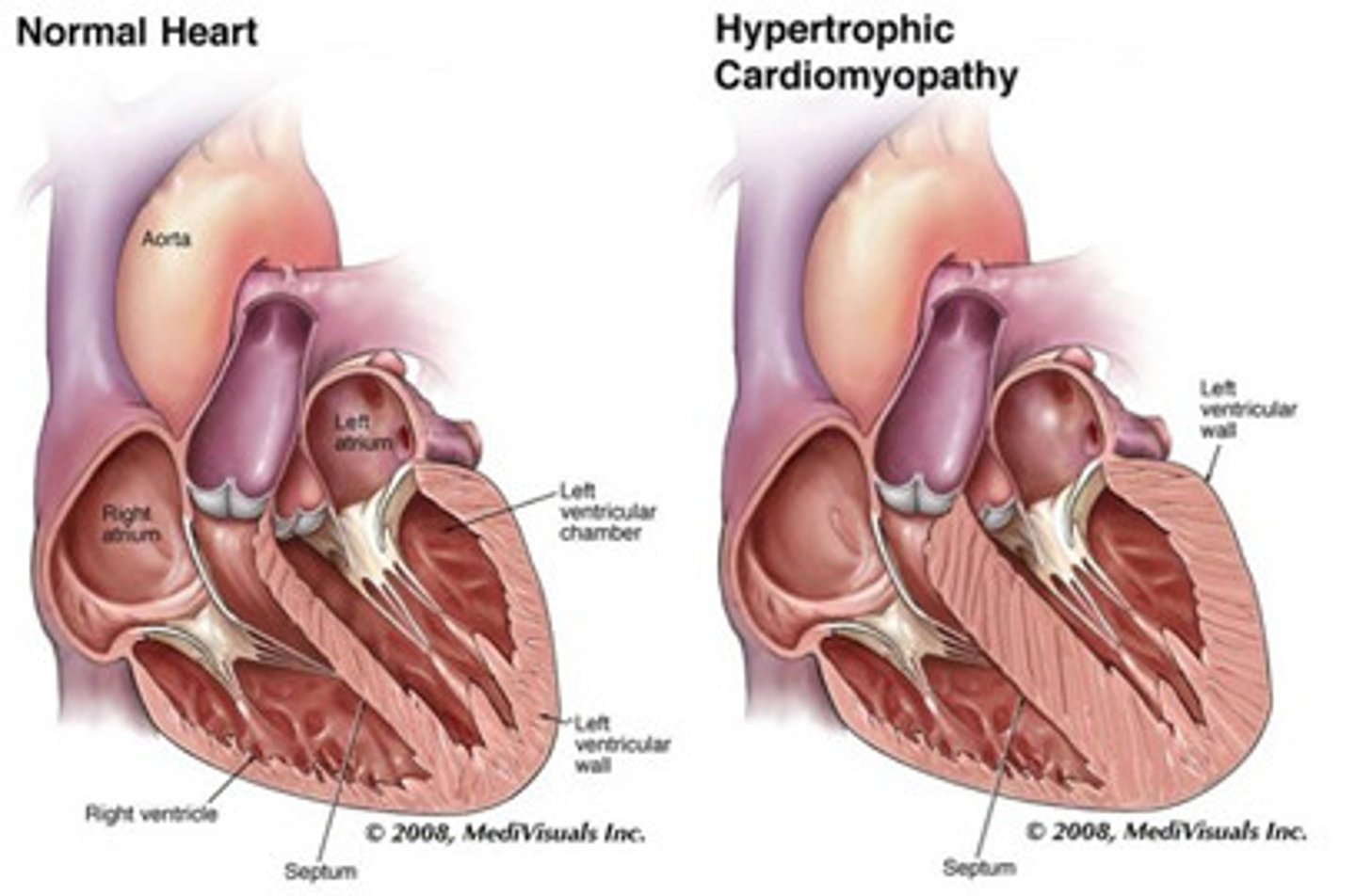
ventricular septal defect
- this is due to an abnormal connection between the ventricles or lower chambers of the heart
- it is a common heart defect, more likely to occur at birth
- involves a hole that is in the wall of the heart between the lower chambers
- most holes close on their own
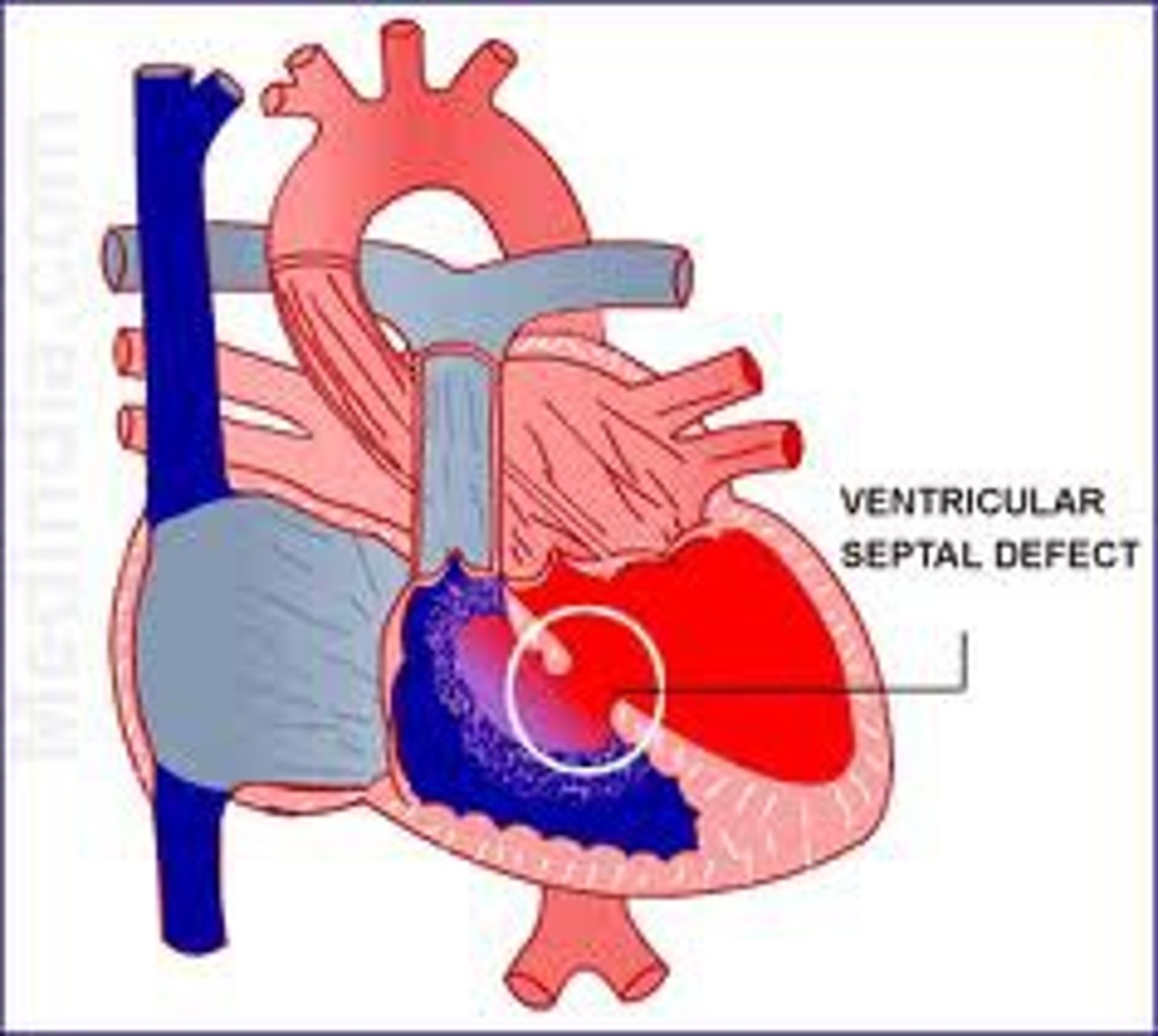
bacterial endocarditis
- an infection caused by bacteria that has entered the bloodstream
- the bacteria settles either in the lining of the heart, in a heart valve, or a blood vessel
- this causes the endocardium to become inflamed, which damages the heart valves
stethoscope
used to listen to sounds produced within the body chiefly in the heart and lungs
scale
measures weight
sphygmomanometer
measuring the force of blood through the blood vessels
tape measure
used to take body measurements
pulse oximeter
measures the amount of oxygen in blood
thermometer
measures the degree of one's body heat in fahrenheit or celsius.
pulse
number of heart beats per minute
body mass index
to calculate body mass index (ratio of height to weight)
timer
measures the number of breaths taken per minute
LPN (Licensed Practical Nurse) degree and training
Graduation from an accredited LPN program and pass the National Council Licensure Exam. They need a high school diploma or GED, and then you'll need to graduate from an accredited LPN program. LPN programs generally include one year of coursework and practical application at a hospital, vocational technical school or community college.
LPN (Licensed Practical Nurse) duties
Provide basic bedside care for the sick, injured and convalescent, under the direction of physicians and registered nurses. You'll do such tasks as give injections, take vital signs, perform diagnostic tests, dress would and administer medication. Work under registered nurse.
RN (Registered Nurse) degree and training
Need to hold either an Associate Degree in Nursing (ADN) or a Bachelor of Science in Nursing (BSN) in order to work as an RN. Need to earn a Master of Science in Nursing (MSN) as well. Following graduation from an approved program, all U.S.-based RNs must take and pass the NCLEX exam. Similar training to LPN.
RN (Registered Nurse) duties
Maintain records, give patients meds, order & interpret tests, start IVs, educate patients
NP (Nurse Practitioner) degree and training
Bachelors & then Masters or Doctorate + training beyond RN
NP (Nurse Practitioner)
- Ordering, performing and interpreting diagnostic tests such as lab work and x-rays.
- Diagnosing and treating acute and chronic conditions such as diabetes, high blood pressure, infections and injuries.
- Prescribing medications and other treatments.
Managing patients' overall care.
- Counseling.
- Educating patients on disease prevention and positive health and lifestyle choices.
leukocyte, white blood cell (WBC)
largest blood cell; active in immune system, protects against pathogens, foreign substances, and cell debris. 5 kinds of nucleated cells that fight infections; 4,500-11,000/mL or 4.5-11 x 109/L
thrombocytes (platelets)
responsible for clotting blood during bleeding; 150,000 to 450,000 platelets per microliter of blood.
erythrocytes, red blood ells (RBC)
carries oxygen; the cells that transport oxygen around the body. men - 4.7 to 6.1 million cells per microlitre (cells/mcL) women - 4.2 to 5.4 million cells/mcL
plasma
removes waste from cells and gives necessities to blood cells
phlebotomist
trained to draw blood from patients who require testing as well as blood donors. They draw and prepare blood for medical testing, transfusions or donation. trained to collect blood samples via venipuncture, finger pricks, or in the case of infants, heel pricks.
hematologist
they study blood, blood-forming organs and blood diseases. is a doctor that specializes in the research, diagnosis, treatment, and prevention of blood disorders. they're concerned with the treatment of blood disorders and malignancies, including types of hemophilia, leukemia, lymphoma and sickle-cell anemia.
hematocrit
proportion of RBCs to plasma; 13.5-17.5 g/dL (men) & 12-15.5 g/dL (women)
hemoglobin
the oxygen-carrying protein in red blood cells; 13.5-17.5 g/dL (men) & 12-15.5 g/dL (women)
low WBC
viral infection is preventing bone marrow from making new WBCs
high wbc
may indicate that the immune system is working to destroy an infection. it may also be a sign of physical or emotional stress. people with particular blood cancers may also have high white blood cells counts.
low RBC
you have a condition called anemia. this means your blood has lower than normal hemoglobin (Hgb) levels. hemoglobin is the part of the red blood cell (RBC) that carries oxygen to all the cells in your body. anemia is a common side effect in patients with cancer.
high RBC
limited oxygen supply due to heart or other condition is triggering need for extra RBCs
low hemoglobin
lead to anemia, which causes symptoms like fatigue and trouble breathing.
high hemoglobin
occurs most commonly when your body requires an increased oxygen-carrying capacity, usually because: you smoke, or you live at a high altitude and your red blood cell production naturally increases to compensate for the lower oxygen supply there.
low hematocrit
loss of blood, iron deficiency, bone marrow problems or a disease like sickle cell
high hematocrit
means that you have more red blood cells than what's considered to be healthy. could indicate underlying medical conditions like: Dehydration. Carbon monoxide poisoning.
low platelet count
also called thrombocytopenia. this condition can range from mild to severe, depending on its underlying cause. for some, the symptoms can include severe bleeding and are possibly fatal if they're not treated.
high platelet count
cancers such as lung, ovarian, gastrointestinal or breast cancer can cause this
Lipid Panel - Cholesterol
Blood test for the prevention of disease, particularly heart disease, is the test for cholesterol. It measures the total cholesterol levels. Too much cholesterol in the blood, particularly LDL, can cause a build-up of plaque, a fatty substance that builds up inside the arteries. HDL helps get rid of the excess LDL that can cause blockages. Therefore, a balance of LDL and HDL keeps circulating lipids from becoming trapped inside our blood vessels.
Basic Metabolic Panel (BMP)
A blood test that measures your sugar (glucose) level, electrolyte and fluid balance, and kidney function. Glucose is a type of sugar your body uses for energy. Electrolytes keep your body's fluids in balance. It checks the status of your metabolism that monitors specific substances in the blood and provides information about these reactions. Abnormal metabolic panel results may indicate diabetes, problems with the kidneys, or other issues with hormones. Hormones are chemical signals that help communicate information inside your body.
Neurofibromatosis type 1
caused by mutations in the gene that controls production of a protein called neurofibromin (neurofibromin 1). this gene is believed to function as a tumor suppressor. is considered to have an autosomal dominant pattern of inheritance. people with this condition are born with one mutated copy of the NF1 gene in each cell. in about half of cases, the altered gene is inherited from an affected parent.
interphase
DNA is uncoiled and is called chromatin. the cell grows, DNA replicates, and organelles grow in preparation for cell division.
prophase
the nuclear membrane breaks apart and the chromatin condenses into chromosomes. the centrioles form a star-shaped structure and a spindle forms between them.
metaphase
chromosomes line up in the center of the cell. each chromosome attaches itself to a spindle fiber.
anaphase
the chromatids are pulled apart by the spindle fibers and are moved to opposite sides of the cell.